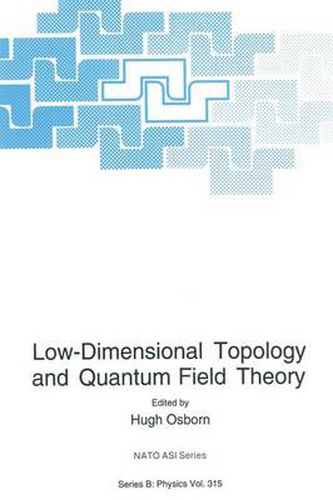Readings Newsletter
Become a Readings Member to make your shopping experience even easier.
Sign in or sign up for free!
You’re not far away from qualifying for FREE standard shipping within Australia
You’ve qualified for FREE standard shipping within Australia
The cart is loading…






This title is printed to order. This book may have been self-published. If so, we cannot guarantee the quality of the content. In the main most books will have gone through the editing process however some may not. We therefore suggest that you be aware of this before ordering this book. If in doubt check either the author or publisher’s details as we are unable to accept any returns unless they are faulty. Please contact us if you have any questions.
The motivations, goals and general culture of theoretical physics and mathematics are different. Most practitioners of either discipline have no necessity for most of the time to keep abreast of the latest developments in the other. However on occasion newly developed mathematical concepts become relevant in theoretical physics and the less rigorous theoretical physics framework may prove valuable in understanding and suggesting new theorems and approaches in pure mathematics. Such interdis ciplinary successes invariably cause much rejoicing, as over a prodigal son returned. In recent years the framework provided by quantum field theory and functional in tegrals, developed over half a century in theoretical physics, have proved a fertile soil for developments in low dimensional topology and especially knot theory. Given this background it was particularly pleasing that NATO was able to generously sup port an Advanced Research Workshop to be held in Cambridge, England from 6th to 12th September 1992 with the title Low Dimensional Topology and Quantum Field Theory. Although independently organised this overlapped as far as some speak ers were concerned with a longer term programme with the same title organised by Professor M Green, Professor E Corrigan and Dr R Lickorish. The contents of this proceedings of the workshop demonstrate the breadth of topics now of interest on the interface between theoretical physics and mathematics as well as the sophistication of the mathematical tools required in current theoretical physics.
$9.00 standard shipping within Australia
FREE standard shipping within Australia for orders over $100.00
Express & International shipping calculated at checkout
This title is printed to order. This book may have been self-published. If so, we cannot guarantee the quality of the content. In the main most books will have gone through the editing process however some may not. We therefore suggest that you be aware of this before ordering this book. If in doubt check either the author or publisher’s details as we are unable to accept any returns unless they are faulty. Please contact us if you have any questions.
The motivations, goals and general culture of theoretical physics and mathematics are different. Most practitioners of either discipline have no necessity for most of the time to keep abreast of the latest developments in the other. However on occasion newly developed mathematical concepts become relevant in theoretical physics and the less rigorous theoretical physics framework may prove valuable in understanding and suggesting new theorems and approaches in pure mathematics. Such interdis ciplinary successes invariably cause much rejoicing, as over a prodigal son returned. In recent years the framework provided by quantum field theory and functional in tegrals, developed over half a century in theoretical physics, have proved a fertile soil for developments in low dimensional topology and especially knot theory. Given this background it was particularly pleasing that NATO was able to generously sup port an Advanced Research Workshop to be held in Cambridge, England from 6th to 12th September 1992 with the title Low Dimensional Topology and Quantum Field Theory. Although independently organised this overlapped as far as some speak ers were concerned with a longer term programme with the same title organised by Professor M Green, Professor E Corrigan and Dr R Lickorish. The contents of this proceedings of the workshop demonstrate the breadth of topics now of interest on the interface between theoretical physics and mathematics as well as the sophistication of the mathematical tools required in current theoretical physics.